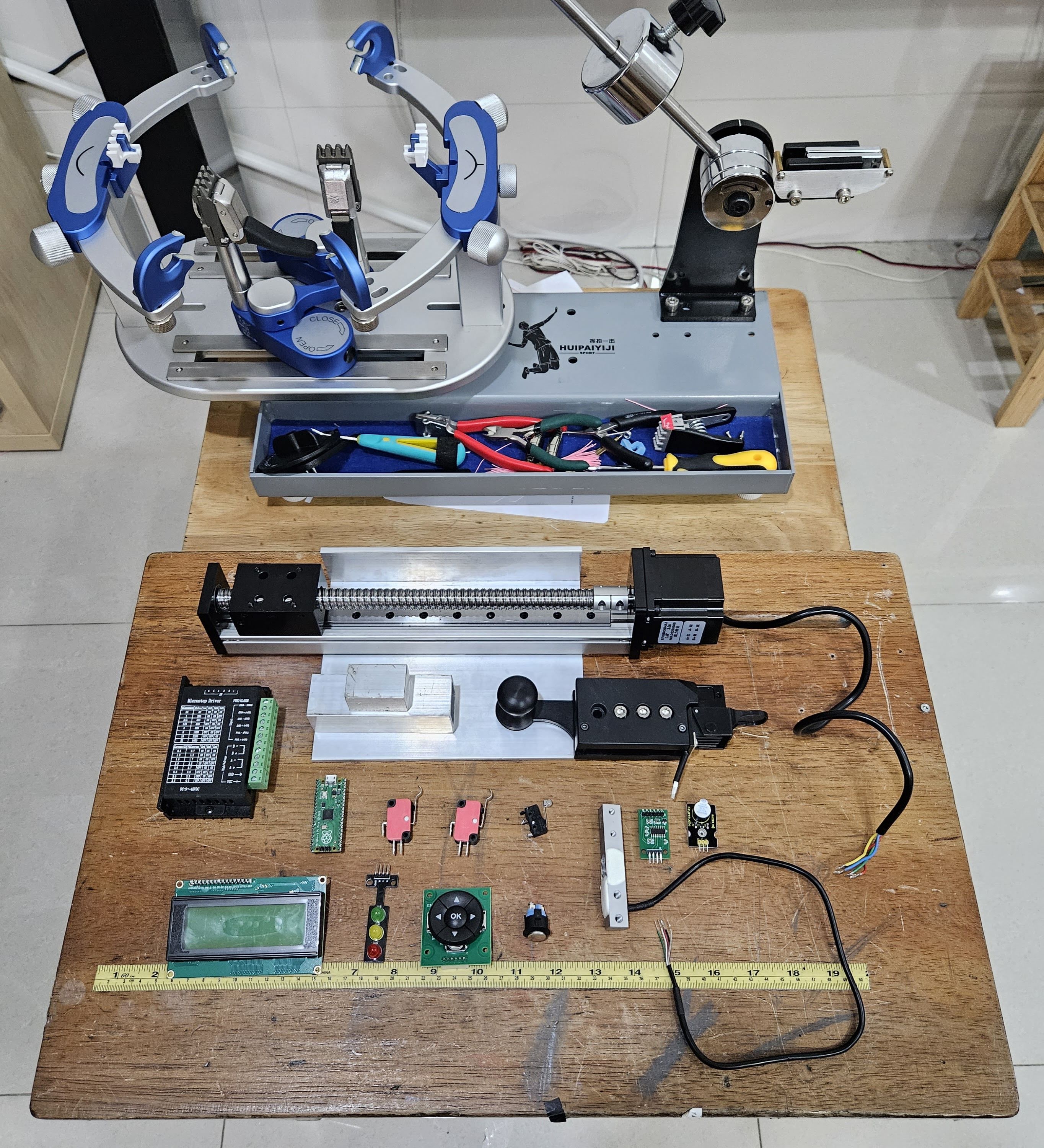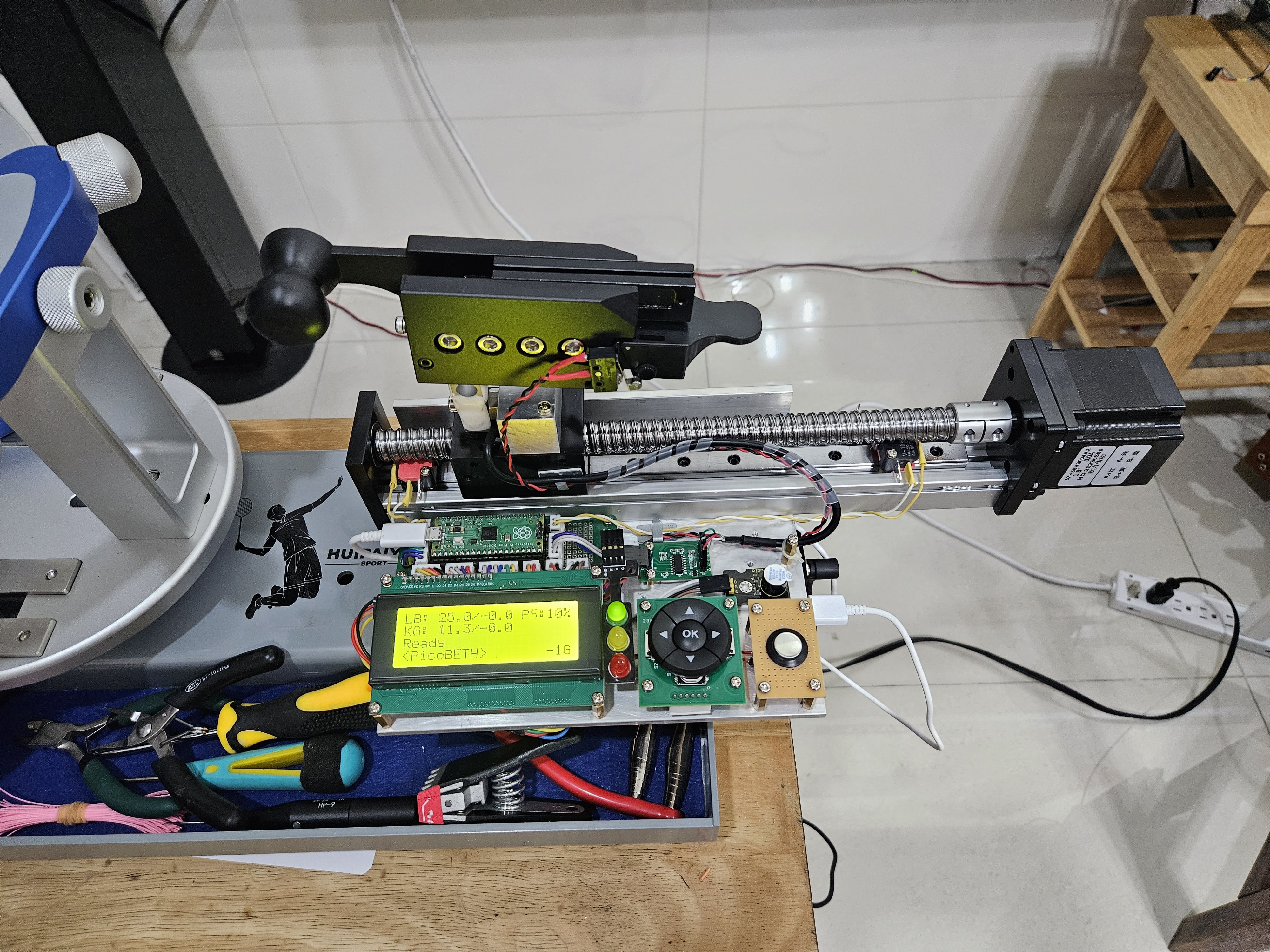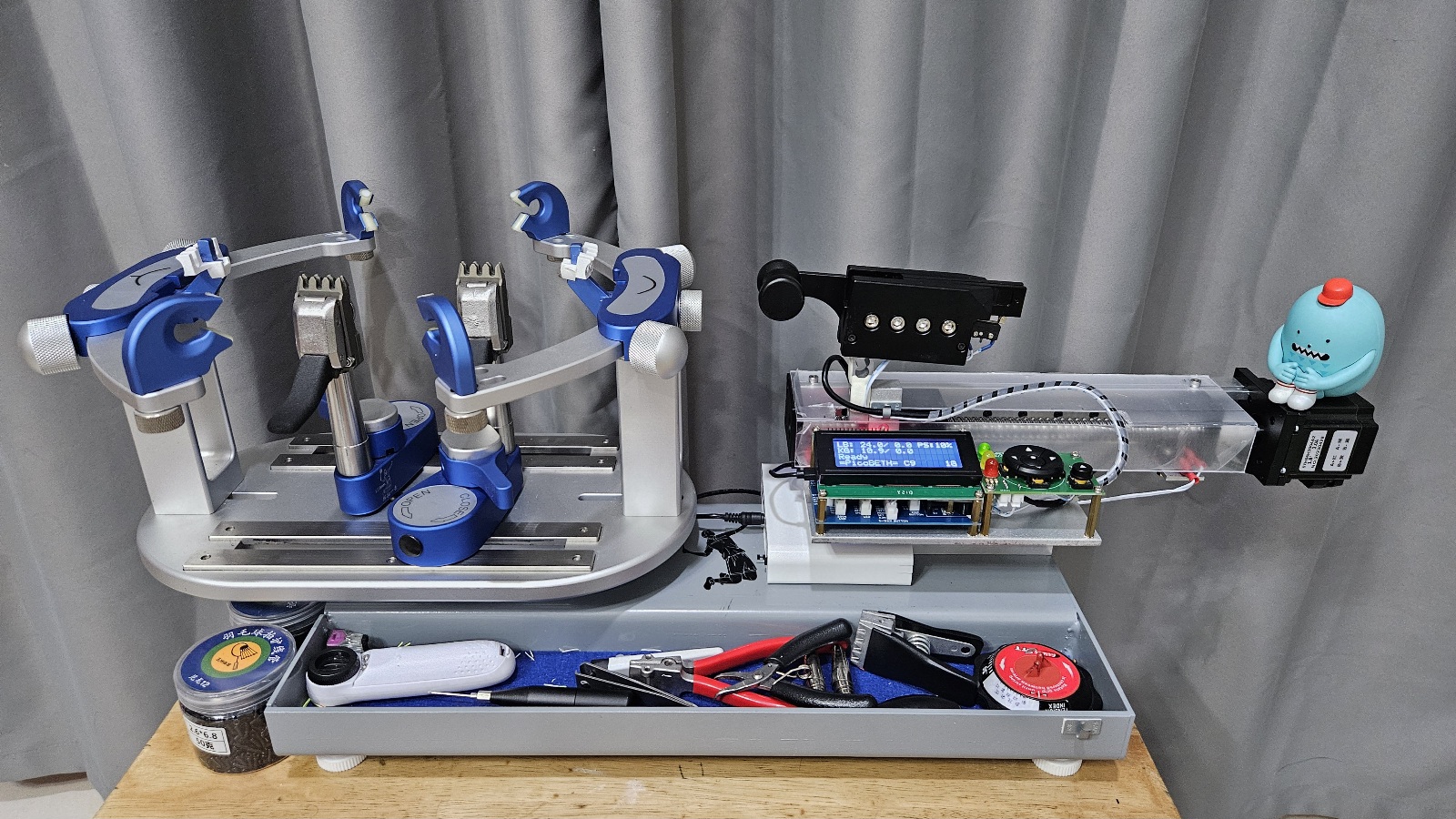PicoBETH (Raspberry Pico Badminton Electronic Tension Head) is an open-source project that allows hobbyist stringers who enjoy stringing but only have mechanical stringing machines (drop-weight, manual crank) to create their own electronic tensioning head. If you have basic programming skills, this project can be easily completed.
Design philosophy: Economical, Intuitive, Accurate
- LB/KG display and setting
- Pre-Stretch function
- Constant-Pull system
- Knot function
- Tension adjustment manually during tensioning
- Tension calibration
- Stringing timer
- Tension timer
- Tension counter and boot counter
- Detailed recording of tensioning logs
- Pull speed with 9-speed selection
- 0.05LB High Precision
- Achieved with the Sparkfun HX711 at 94Hz and software version V2.2 and later.
- DEMO Vides
- Low Power Consumption
- Uses a DC19V4A power supply. *
- Real-time UPS Redundancy (Uninterruptible Power Supply)
- Uses 5 x 18650 batteries to ensure at least one complete racquet stringing.
- Compact and Space-Saving
- Dimensions are approximately 38(L) x 15(W) x 9(H) CM.(excluding clamp head)
- Simple structure, low cost, and easy maintenance
- All components are easy to source and inexpensive
- High durability
- Over 415,000 tensioning reliability tests completed (testing ongoing)
Caution
In the fast mode after version 2.70, when the speed is set to L7 or higher and the tension exceeds 30LB, the original 12V3A power supply may be insufficient, potentially causing the motor to slip. Therefore, this version has been upgraded to a 19V4A power supply. If you also plan to switch to a 19V power supply, please ensure that your 5V power converter can handle a 19V input voltage. Additionally, if you are using an external UPS, it should also be upgraded to a version that can accept 19V input and output.
| Project Item | Progress | Remarks |
|---|---|---|
| Reliability Testing | Ongoing | Tensioning cycles have reached 415,000+ with no failures (as of 2024/10/10) Test Video |
| Tennis Racquet Compatibility | Testing | Performing 75-85LB cyclic tension reliability testing using the GX80 sliding table. Tensioning cycles have reached 70,000+ (as of 2024/10/10) |
| Pico 2 Compatibility | Completed | Due to the RP2350-E9 bug, it has been confirmed that it cannot be used directly. |
| Create an adapter to match the mounting holes of the WISE 2086 | Not started |
A year ago, due to company club activities, I started playing badminton. Although my badminton skills weren't great, I became fascinated with stringing. I purchased a drop-weight stringing machine and initially planned to buy an electronic tensioning head. However, I later thought about using my knowledge to create this project on the Raspberry Pico, incorporating a load sensor, several microswitches, and buttons.
Drop-weight stringing machine and modification parts

Modification completed (Under Development)

Final machine How to make step by step

Stringing demonstration video
Note
If you don't have a stringing machine, you can refer to this project to make one: Pico-Badminton-Stringer
Note
If you are choosing a manual badminton stringing machine. I recommend purchasing a drop-weight machine with a six-point fixed and base clamp. Drop-weight machines have a somewhat constant-pull effect, and the rackets strung with a drop-weight machine are not much different from those strung with an electronic machine. Before completing this project, you can use a drop-weight machine to become familiar with stringing. In the future, if the electronic stringing head malfunctions, you can quickly switch back to using the drop-weight machine head.
If the structure of your badminton stringing machine is not strong enough, I strongly advise against continuing with this project. A weak fixed platform can deform during tensioning, causing the racket frame to become round and the tension to decrease. Eventually, the machine will compensate for the tension, creating a vicious cycle that will ultimately lead to the racket breaking.
Caution
Extremely important: If your stringing machine is of a simple type, please make sure to reinforce the structure.
- Operation and Settings Guide
- Hardware Setup, Procurement, and Maintenance
- Maintenance and Logs Guide
- FAQ (Frequently Asked Questions)
- Pico Stringing Pattern
- Research Lab
| Branch Name | Description |
|---|---|
imp/beadclip-btn@jpliew |
Improved Bead Clip Activation Button |
imp/tennis |
Tennis Racquet Compatibility (Testing in progress, production method will be released after 100,000 reliability test cycles) |
If you encounter any issues during the production process, feel free to leave a comment on the YouTube tutorial video. If you complete the project, you're also very welcome to share photos of your finished product in the GitHub discussions.
- Source Code: Licensed under the Apache License 2.0
- Hardware Design: Distributed under the CERN Open Hardware Licence v2 - Weakly Reciprocal




